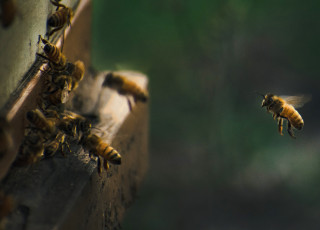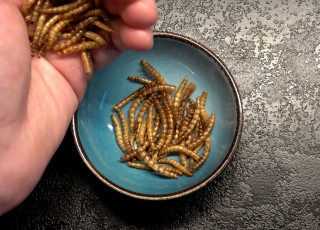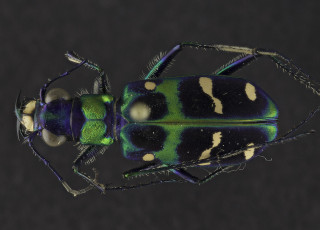Killers Are Lurking in Your Garden. Don’t Worry, They’re Bugs
Enjoy this article and don't forget that BugFest returns to NHMU on August 9–10, 2025! Come join us for this BIG celebration of Utah’s tiniest residents.
By Jude Coleman
When you think of a fearsome predator, animals like lions or sharks might come to mind. But some of Earth’s best hunters could fit on a fingernail or in the palm of a hand: insects.
When people refer to insects or bugs, they’re often colloquially talking about a larger group of animals called arthropods. While insects and bugs have narrower classifications of their own, arthropods are a broader group of animals with chitinous exoskeletons, segmented bodies, and pairs of jointed legs. The group includes beetles, arachnids, crustaceans, and true bugs.
Predatory arthropods are one of the foundations of an ecosystem. They keep other insect populations in check, contributing to the balance between herbivores, decomposers and parasites. Without killer bugs, there would be more mosquitos spreading disease and aphids chowing down on crops. “You need to have things that are doing all different kinds of jobs,” said Christy Bills, the Invertebrate Collections Manager at the Natural History Museum of Utah. That means a variety of insects playing unique roles. “A healthy ecosystem is going to have a lot of diversity.”
Some killer arthropods get a bad rap, despite being helpful in the garden and beyond. Spiders, for example, are the root of many peoples’ fears. But some researchers have estimated that the arachnids eat between 400 and 800 million metric tons of insects annually. That’s around 130 million hippos worth of insects! And that’s just spiders—without predatory insects, the world would be awash in billions of extra bugs. On the flip side, some insects that are touted for their pest control benefits in gardens aren’t just eating things like aphids and mites. They’re also eating pollinators, such as bees and butterflies.
Zoom out in the food web a bit, and insects become even more important. When predators become prey themselves, they support birds, bats, reptiles, amphibians and even small mammals.
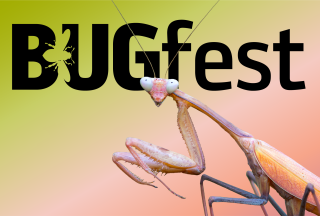
BugFest Returns to NHMU!
Flutter on up to BugFest — a BIG celebration of Utah’s tiniest residents. Join us August 9-10, with a special film screening on Friday, August 8.
In August, NHMU is celebrating one predatory bug—the praying mantis—at BugFest, a celebration of the insect world. Visitors can learn more about praying mantises and other insects August 8, 9, and 10. But the praying mantis is just one of many garden predators. Here are five backyard killers to thank for keeping the bug world in balance.
Praying Mantis
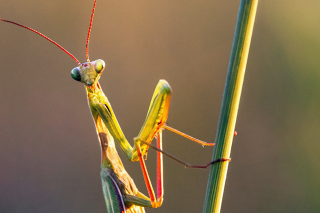
With their iconic raptorial legs, praying mantises are one of the coolest-looking killers out there. As generalist predators, they eat pretty much anything that’s not too big to catch. They use camouflage to hide in their surroundings—some are green to mimic plants, others are brown to blend with bark and grass—and ambush anything that looks tasty and strays too close. To help them find prey, mantises have particularly acute eyesight thanks to their stereoscopic vision. Stereoscopic vision means they can see their surroundings with 3-D depth perception like humans, heightening their ability to hunt. Mantises undergo an incomplete metamorphosis, which means their offspring look like miniature versions of an adult. Mini mantises are as blood-thirsty as adults, but have to stick to pint-sized prey like gnats and fruit flies.
Dragonflies
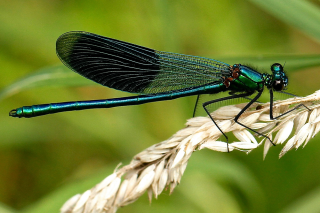
Dragonflies are the world's most successful predators, with the highest kill rate of any animal—including mammalian hunters. As adults, these aerial predators hunt a variety of flying bugs. Although dragonflies are generalist predators, meaning that they’ll pursue anything that catches their fancy, they’re considered beneficial insects because of the vast quantities of mosquitos, gnats, and other pesky insects that they consume. As a dragonfly swoops through the air, it catches prey midflight with its four front legs stretched out like a basket. As aquatic juveniles, the larvae (called nymphs or naiads) sit and wait for prey in the water. Their lower jaws are armed with a grabber claw, and the whole lower mandible can shoot out to snatch a snack.
Jumping Spiders
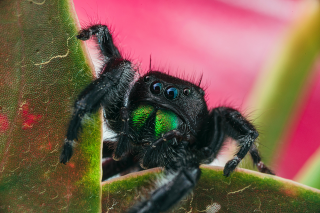
All spiders are predators. But jumping spiders are special: instead of building a web to ensnare their prey, they actively hunt for small insects. And when they lock on a target, their powerful legs launch them at high speed. For a spider that’s often smaller than a pinky nail, they can cover a massive distance—sometimes nearly 40 times their body length. Like praying mantises, jumping spiders have stereoscopic vision, and can also see a wide range of colors. On top of their hunting prowess, “they’re really cute,” said Bills, featuring big, adorable eyes and colorful patterns.
Ladybugs
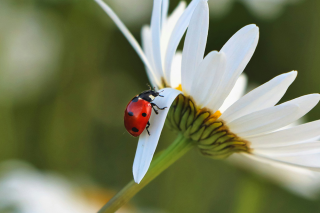
Ladybugs aren’t technically bugs—they’re beetles (true bugs are a taxonomic order of their own, although the word “bug” has become synonymous with all insects). Entomologists usually refer to these red or orange, often spotted critters as ladybird beetles. Voracious hunters of aphids and other small garden pests, ladybird beetle adults and their larvae—a red and black, alligator-like grub—can be a boon for veggies in a greenhouse. Although larvae and adults look very different, both have similar diets and actively hunt their prey using sight and smell. When stressed, adults release blood (hemolymph) through their leg joints to ward off an attack, a tactic called reflexive bleeding.
Assassin Bugs
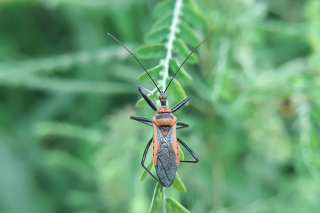
Like their name implies, assassin bugs are “true bugs” and skilled killers. And their weapon of choice is their beak, or rostrum – the mouthparts of this group of insects have evolved into a stiff straw that they poke into whatever they want to eat and suck out the liquid inside. Assassin bugs stab their beak into victims and suck out the liquid hemolymph within. There are thousands of species of assassin bugs, including a few that feed on humans—but those are very rare in Utah. The assassin bugs found in houses in Utah are often the species called the masked hunter, known for their habit as larvae of covering themselves in lint and dust. These stone-cold killers dine on bedbugs, carpet beetles and other arthropods.
To attract more insects into your garden, try to leave things a little messy. A patch of bare dirt provides a place for burrowing insects to hide, while clumps of tall native grass also makes for good habitat. Planting native plants, particularly flowers, will attract nectar-slurping insects and the predators that eat them. “A healthy ecosystem includes predators,” said entomologist Jason Cryan, the Sarah B. George Executive Director of NHMU. “It's better to encourage that healthy ecosystem to exist, rather than using pesticides and sprays and chemicals to try to sanitize your garden.”


